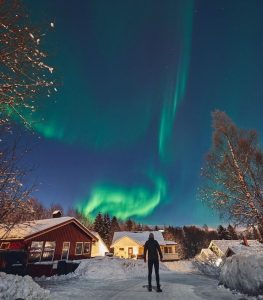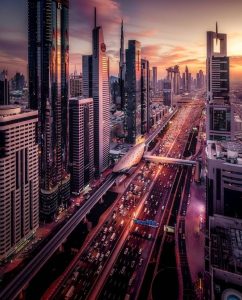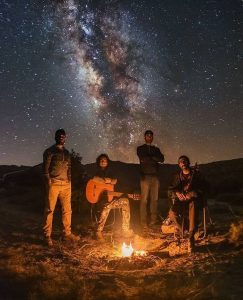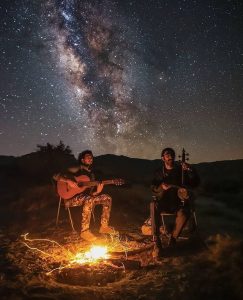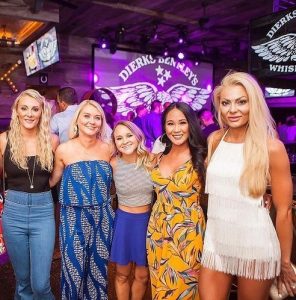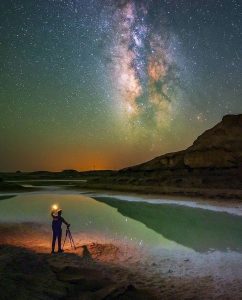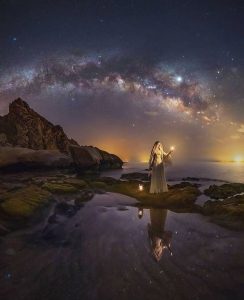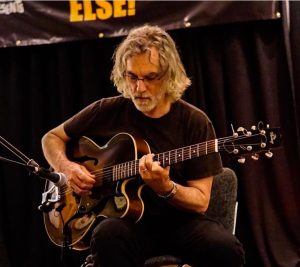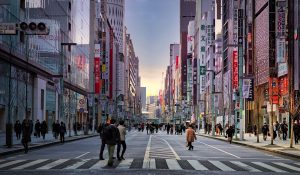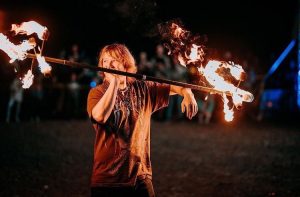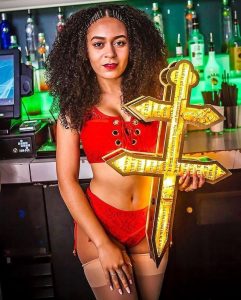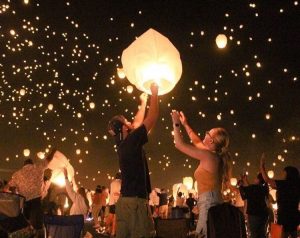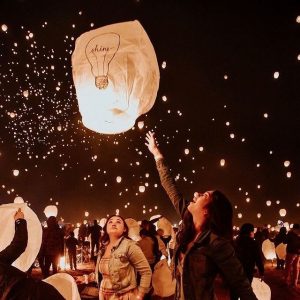Last Updated on December 5, 2023 by Sharon Advik
Hey, what’s up, guys?
This Guide will tell you about the best Sony lens for night photography.
You can use it for night photography to get those epic night shots.
And also some of the problems with it what you need to know before you buy it.
Let’s drive in:
Which is the best Sony lens for Night photography?
Here are my recommended top 9 best Sony lenses for Night photography:-
Sigma 16mm 1.4: (Best lens for astrophotography Sony A6300, A6400, A6000, A6500)
Today, we’ll be talking about the Sigma 16-millimeter f. 1.4 lens, specifically for Sony E mount cameras like the A6300, A6400, and A6500.
So, I bought this lens about a year ago.
I purchased it around the same time that I purchased the Sony A6500.
My reasons for purchasing it were primarily for vlogging before I bought it.
I was doing a lot of landscape photography and cityscape photography on location.
It was tough to film what I was doing with a single camera in a single life, take photos, and film the whole thing.
I also plan on using the lens a little bit for Astrophotography.
I used it more than I initially anticipated for astrophotography because the lens’s wide aperture is conducive to that type of thing.
The Sigma 16mm of 1.4 does an incredible job for video.
We’ll talk about Astrophotography, and we’ll talk about sharpness and other things like that.
So, in terms of just general information, yes, this lens is a prime lens.
It’s 16 millimeters with a wide aperture of 1.4, making it very good for Astrophotography, portraits, and similar uses.
Or just in shots where you want to separate whatever subject you’re looking at from the rest of the field of view.
After a year’s use, Let’s review some things I loved about the Sigma 16-millimeter f 1.4.
The first thing that should come as no surprise is that the aperture 1.4 is incredible for so many things, and as I said before.
I’ve been able to get amazing shots of the night sky.
I don’t do many portraits, but I have done some creative portraits of my wife.
So what I’ve learned, what I feel like I’ve gotten very good at doing in terms of Astrophotography with this lens, is taking you, to know, taking a few shots back to back to back, maybe five or six and a period of 30 seconds or so.
I then blend all these in Photoshop to get a detailed, almost-noise-free image of the Milky Way in the night sky.
I’ve taken some images of the Milky Way that I never dreamed were ideal before purchasing this lens, which is insanely fantastic for astrophotography.
Besides, the build quality is excellent; the lens feels mostly metal, and the focus ring feels a little rubber-like, maybe soft plastic, but it’s very well-built.
The next thing I love about the lens is its autofocusing capability with the Sony system.
So, this lens is not a Sony lens; the Sigma lens is built for the Sony email.
But in autofocusing, I’ve seen zero difference between the speed and reliability of this lens and other Sony lenses I use.
They seem to focus just as quickly; continuous autofocus in video mode is fine.
I don’t do portrait photography; I’m mostly a cityscape, landscape, and interior design photographer with some automotive work.
So autofocus isn’t a big deal because I can manually focus.
The only other thing that I can think about that downside to this lens is the weight.
Now, this lens weighs 405 grams.
Initially, that doesn’t sound all that heavy, but it can be if you frequently vlog with it, like I do.
It does get heavy in hand and makes your shoulder tired.
But in terms of Vlogging, the 16-millimeter focal length is pretty good.
It’s very wide. It’s wide enough for vlogging.
That’s really about the things that I disliked.
There are not many things to dislike; this lens is fantastic.
The negatives are barely like a blip on the radar compared to all the positives you get with this lens.

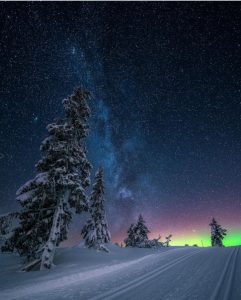
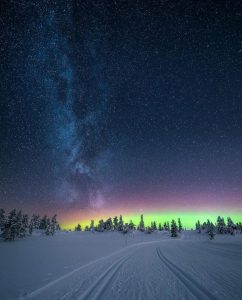
Sigma 14mm 1.8: (Best lens for night photography Sony A7iii)
I want to talk about why I bought it and what I liked and disliked.
So, we will start with why I bought this lens.
I’ve been waiting for this lens because I love shooting photos and videos.
I love getting wide-angle shots because they’re so crucial to me.
It’s so important and tells a lot within a video.
The other reason why I bought this lens is how sharp it is.
This was 1.8, so better bokeh, better in low light, and sharp wide.
So, I was finally happy that I bought this lens.
I shoot many videos in the studio, so you will control lighting, adjust, and whatnot when it comes to a studio.
So, I bought this lens because the style in the image that it provides is different.
I shot a music video at night, and this lens delivers; it just gives you something different, and I needed something different.
I wanted to get creative and try something different, and this is a super crazy waiting list going to give me that type of image.
So, there are many ways to implement this lens.
It’s not just for Astrophotography, which this lens is known for.
So that is why I’ve also purchased this lens in case I shoot real estate paid work for clients and wedding photography.
Overall, the positive of this lens I love is the sharpness; I think this lens is sharp for photos and videos.
It’s built well, and it’s weather-sealed.
It’s the lens that I recommend to you guys.
The one downfall of this lens is that you can’t shoot photos vertically; everything looks distorted and sloppy.
Another downfall of this lens is the distortion; you must be extra careful.
I did my study before I bought this lens. It’s just something I’ve always wanted.
I wanted a sharp whitening lens that’s fast, in case I need extra bokeh extra stuff is low like this was the lens.
I knew it was expensive, and I finally came across it. I’m excited that I bought the lens.
So, this lens plays a role for me in different areas; it’s just more.
Now, if you’re just trying to get this lens for photos, you can shoot wherever you want and boost the aperture as much as possible.
I often use it in my music videos and at weddings for ceremonies.
You can use this on many shoots, so look into this lens.
Maybe this lens makes sense for you guys; it depends on what we’re all shooting, so it’s great.
Built quality is outstanding, sharpness of the image you get out of it; honestly, it’s worth the price.
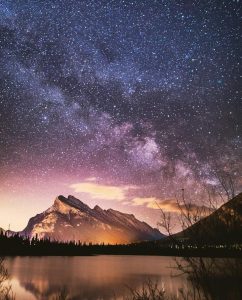
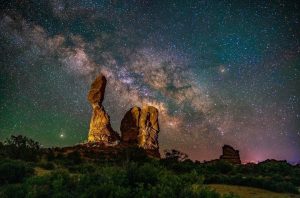
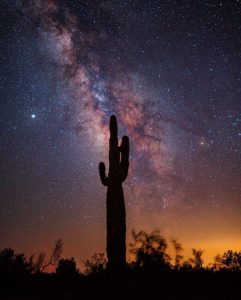
Rokinon 24mm 1.4: (Best Sony lens for astrophotography)
The reason it’s better is that it doesn’t have any of those weird distortions.
It’s a reasonably sharp lens.
This full-frame manual lens is available for almost every camera mount, including Sony, Canon, Nikon, Fuji, and Micro Four Thirds.
It’s a manual focus lens, meaning you don’t have autofocus.
It’s not going to be suitable for moving subjects or anything.
It lets in just as much light; it doesn’t have those weird distortions.
It’s a manual focus, and it’s also a manual aperture lens.
It is a sharp, fast lens with a minimum focus distance of about 10 inches.
While this lens wouldn’t be suitable for portraits, it is an excellent choice for many other photo subjects.
It’s ideal for landscapes, street photography, still life interiors, low light photography, and perhaps Astrophotography.
It’s got quite a bit of vignetting, but any lens wide open will have some.
For the price, this lens is fantastic.
It’s my new favorite lens for night sky shots, and you can’t beat it.
When I want to zoom in on the best part of the Milky Way, I jump to the 24 millimeters.
Amazingly, this lens remains sharp even when wide open at F 1.4, which is helpful if you’re after a highly narrow depth of field.
Having an aperture of f 1.4 means you’ll also have plenty of light without resorting to high ISO.
So that’s one of the nice things about having a lens with such a wide aperture.
If you like the look of a narrow depth of field for a street product and still life photography, or if you are really into Astrophotography, this is a lens you need to take a look at your offer’s outstanding performance at a reasonable price.
And I think that once you experience a manual focus lens, you might like it much more for these types of photography.
It’s fantastic for video.
I don’t know if any of you guys are video shooters, but having that wide-angle yet shallow depth of field is astonishing.
The only downside to this lens is that it’s a manual focus.
Also, the focus ring is loose, like it doesn’t take hardly anything to bump it out of focus.
Other than that, you can’t beat the price; you can’t beat the performance.
This is the best lens for Astrophotography.
It’s worth checking out, and it’s worth the purchase.
Sony 16-35mm f2.8: (Best Sony Alpha lens for night photography)
This is my most used lens for landscape and travel and even Astrophotography.
Let’s go through the pros and cons of why I use it the most of any lens in my bag and why you need it in yours.
So, there’s this assumption in photography that prime lenses are the only way to go.
It’s a little bit of a myth.
Prime lenses are fantastic, but I don’t believe they’re the only good lens.
When I was first starting in photography, of course, my budget was minimal.
So, I only invested in the Sony 28-millimeter F2 once I realized I had a little more budget to play with.
I knew it wasn’t just a two-month fascination. I invested in the Sony 55 F 1.8, my only two lenses, for a year and a half.
This pushed me to get more creative and explore outside the box.
It also was a little bit limiting for me.
It forced me to explore new compositions because I didn’t have the zoom capability of an interesting zoom lens.
Sometimes, you can’t just zoom with your feet; if you go downhill, you’ll be too low for the shot, and that’s a whole different issue.
Sometimes, you move left to the right because you want to change your composition, but something gets in your way, and zooming in just a tiny bit wouldn’t solve this problem for you.
So, over time, I realized that the image quality of prime lenses is incredible.
There’s a lot to be said about the functionality of zoom lenses for a hobbyist. I found those perfect but discovered a huge draw to shooting once I started booking paid gigs.
I worked for a travel guide for a while, and we would feature everything we could find in a city.
So, good restaurants, famous people, music venues, outdoor hiking, opportunities, etc.
And that is such a broad diversity of subjects; there’s no possible way to choose one, two, or even three primes that get the job done in every scenario.
Stopping to change lenses meant I didn’t get the shot, so I invested in a zoom lens, indispensable for this 16 to 35.
I don’t shoot much interior stuff nowadays, like restaurants and music venues.
I still do a lot of running-gun photography and videography outdoors; this is my go-to lens when hiking.
The 16 to 35 is a fantastic focal length, and the 16 is super-wide for great landscape shots.
35 zoomed-in is enough; you can put a person in the shot and get a lovely environmental portrait.
F 2.8, for me, is plenty of apertures to get great bokeh and drop off if you want to isolate them against the background, and more so if you’re shooting with something like a seminar.
For where you have 42 or more megapixels to play with, that 35 millimeters on the top can be cropped into close to 60 or 70 millimeters.
You’ll still have enough resolution left over for a magazine placement, especially on the internet.
This lens has much more flexibility for running gun video projects than you think.
You can film it at full frame, and you’ll get a 16-millimeter field of view, which is super wide but very functional for fast-running style shots where you want some landscape in it.
But with Sony cameras, you can crop into a super 35 field of view, which turns 35 millimeters at the zooming extent of this lens into just about 50 millimeters.
The one downside is that this lens is heavy, especially compared to many prime lenses.
And I found that it does tend to sort of overload gimbals and steady cams and overloads my shoulders after a long day of shooting.
But for the convenience offered by a lens like this and the functionality of having that plied zoom range.
I’m willing to take the hit on the shoulders and just be a little sore the next day.
So there you have it; that is why I am obsessed with this lens; it’s my favorite.
I have attached one of my cameras at all times on every single shoot that I do nowadays.
And I take it out for everything from landscapes to product shots to Astrophotography.
I highly suggest picking one up if you don’t have one yet.
Take it out for one week, give it a shot, shoot some demo shots, and I think you’ll like it.
Rokinon 12mm f2: (Best Sony lens for night sky photography)
This is the best budget wide-angle lens that you can use to get some epic shots for night photography.
We’re talking about the best whitening lens you can buy on a budget for your night photography; now, what lens is the Rokinon 12-millimeter F2 lens?
This lens is pretty cheap.
So, this is a pretty cheap lens, but you will get pretty Fantastic professional results.
So, I photographed with this lens for about 5 years and got many good results.
As you’ll notice, the F stop on these lenses is pretty tiny.
In numerical value, a smaller number of F stops will mean a wider range of aperture, so you get a wide aperture ring.
That’s going to let in a lot of light and collect the light of the Milky Way that shining something settings like F2 ISO, 800, and a 22nd shutter speed will be perfect for any night photography and Milky Way photography.
Because it will let in a lot of light and focus on the Milky Way, a galactic core you see so often in the Milky Way shots.
Not only that, but night photography can be stuff like star trails, too.
So if you’re photographing star trails, like the same F2 ISO 100 of 32nd exposure, setting your camera to continuous shooting and using a cable release will allow you to take photos constantly.
The benefits of lenses like these from Rokinon will come at a cheaper price.
That will help you save cash, get into these locations, and shoot these images.
I used this for several years when I started landscape photography and got some pretty cool shots of the landscape scene.
And then would use the same setup to go out that night and photograph the night sky photography.
So this lens is accommodating, but there are also some drawbacks to it that you need to be aware of before buying it.
These lenses are only manual focus and manual aperture adjustment.
This lens has no autofocus feature; it is only manual focus, so your subject would move around within the scene.
It would be tough to constantly adjust the manual focus on this and adapt to your subject’s progress.
As your subjects aren’t moving around for landscapes, you can spend time waiting in the right conditions.
The same goes for night sky photography, getting your focus exactly attacked sharply, and then photographing.
Again, it is a winner if you only shoot landscapes or night sky photography.
Now, let’s talk about the manual aperture ring on this lens.
It’s a cool feature, and I like using it a lot because you can easily switch around this lens and get the right aperture you want.
With this lens, I have noticed that you have to focus on the night sky because you have to set this when focusing on something like the focus to infinity.
This is a phenomenal lens considering all things for landscape and night sky photography.
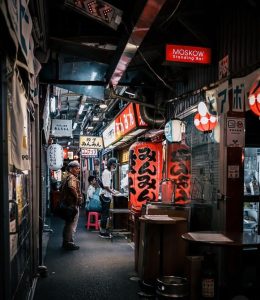
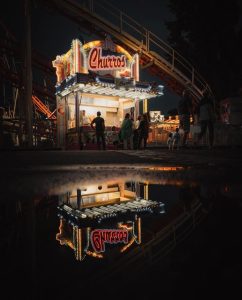
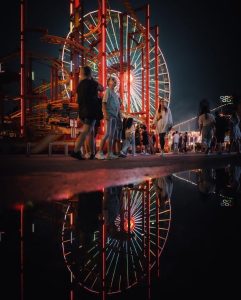


Samyang 12mm f2: (Best lens for night photography Sony A6000)
So, we’re going to talk about what is my favorite lens on the A6000.
And that is the Samyang 12mm f2.
It is an excellent lens.
It is mostly plastic with some metal construction, but it’s mostly plastic.
It’s high-quality plastic, so you don’t have to worry about falling apart when focusing.
It is a manual-only focus lens, and many people I know would say, ” No, I need out-of-focus, man. “
But don’t worry because it’s fantastic.
What if you have an A6000, an A6300, or a Sony camera with an APSC sensor or full-frame interchangeable lens?
Then, you can easily access the focus magnifying, which means you will always get that focus spot without hesitation if you have a manual focus lens.
And there you go, the quality is not a deal-breaker anymore; what can I say about the quality?
The quality of the stands for bringing 12-millimeter lenses is fantastic.
This lens has a lot of things that beat the Sony lens.
First, it is slightly smaller and slightly lighter, which is fantastic.
You want a small, light prime lens to carry around your camera; it produces better color and contrast because it’s a prime lens.
The Samyang is a prime lens with a fixed focal length, so there is no moving glass inside except for focusing.
There’s no zooming in and out.
So, it was made and optimized for that focal length, and you get fantastic quality sharpness all the way across, just slight distortion.
It’s a wide-angle lens. In the end, it is not a fisheye lens.
It is optimized for an APSC sensor, so that is also fantastic.
It works great if you want to take Astrophotography.
That’s great for Astrophotography because F2 is a nice F stop to take Astrophotography.
So, for all you Astrophotographers who want to take pictures, this lens is perfectly ideal for you.
Another thing to consider why this lens is better is simply the fact of the price.
This lens is sharp enough to crop it in slightly and look great.
You can crop it into 18 millimeters.
You can even go as far as maybe 22 millimeters.
Now, what about bokeh?
Well, at 12 millimeters F2, you won’t get that much bokeh, and there are some out-of-focus areas.
What about the colors?
Well, I’m not sure how to explain this, but the colors on this lens are excellent.
The color reproduction is fantastic.
I am convinced it has something to do with the optics on the inside.
One must have some magical coatings because this lens can produce some punchy, vibrant colors concerning its competitors.
You will see that the colors are unique; you can achieve some contrasting colors.
And really, you don’t have to be afraid to move that slider up to get nice, rich, saturated colors.
Let me tell you something: this lens is so great.
I have it on my camera 95% of the day.
What about the video quality?
Can I use this lens to make great videos?
Yes, you can because it has fantastic color reproduction.
Overall, you will not find a prime lens 12 millimeter F2 at such a low price, and Samyang makes fantastic lenses.
Sony 16-35mm F4: (Best budget Sony lens for night photography)
The 16 to 35 F4 for Sony full-frame lens.
I’m going to tell you what I like and what I don’t about it.
As far as build quality is concerned, it’s what you’d expect of a Sony lens.
It’s awesomely tiny, only 3.88 inches long, and just over three inches wide.
It’s solid metal construction, and it weighs just over a pound.
You’ll find a large grippy zoom ring in the middle, with a smaller focus ring in the front, which is also metal and tends to collect dirt and dust pretty easily, like all the Sony lenses.
It does come with a lens hood, as well as a little bag to protect your lens.
You will notice the absence of any buttons, including a manual focus button or a focus hold button, which is disappointing.
The lens extends as you zoom in; although it has a pleasant, sturdy metal mount, it lacks proper weather sealing.
And let’s talk about the autofocus system.
Right off the bat, it’s snappy, fast, silent, and like many Sony lenses, it does the job.
It works great.
Now, who’s this lens for? Is it a portrait lens? Sure.
The 35-millimeter makes an exciting portrait lens; it’s great for real estate, and I mean an f4 in almost every situation.
Its bokeh is average, but the autofocus works great, even in low light.
I love this lens for journalistic-type photography and, of course, for landscapes.
Remember that one feature you pay for in this lens is image stabilization, which goes great with Sony’s Ibis systems in their newer cameras.
With the sharpness and performance of this lens, you’ll notice a little bit of vignetting and a tiny bit of distortion.
And, of course, I’m not too worried about those things in any lens because I come over here and click on profile correction; right off the bat, it will fix those things for me, so I don’t worry about that.
16 millimeters; however, you’re going to notice the vignetting and the distortion, and of course, being an ultra-wide lens, this is quite common.
And again, it’s not a big deal to me because I can go ahead and click that, and it’s pretty much gone. It straightens everything out, and I lose that vignetting.
It’s pretty sharp and very nice, but as far as wide-angle lenses go, I’d say it’s a pretty good performance.
I’ve never had a problem with it.
I’ve always taken nice pictures and been happy with the results, and you expect no less for the price.
So, as far as performance goes, packing, image stabilization, incredible sharpness, and a great focal range are lovely performer lenses.
This is a great versatile lens; I like many great things about it, a few that I don’t, and with not much competition.
It is a great contender.
It’s ripped between considered and buy if you want a tremendous ultra-wide lens.
This might be the one for you if the budget is an issue.
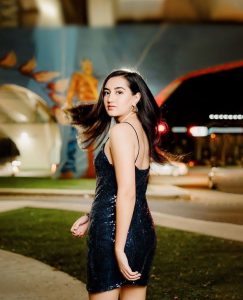

Sony 24mm F1.4 Low Light Beast: (Best Sony lens for night street photography)
I believe it’s been over a year that I’ve had the 24-millimeter f 1.4.
What do I think about it?
Do I still recommend 24 millimeters, 1.4 yes or no, or is it better to get a zoom lens, maybe a little wider?
Let’s answer that question together.
It has been one of my favorite lenses over the past year, and I want to tell you if it’s worth it.
What I love about my 24 millimeters is 1.4.
First of all, and that’s something I think we can all agree on, it is tiny.
It is 200 grams lighter than any other 24 millimeters.
It’s a great lens also to scare people off that 24 millimeter 1.4 small tiny convex fits in your hand, fits in your pocket, and most importantly, is not going to scare off anyone.
You’ll look like a normal tourist, and if you were to approach people, they would likely be okay with you taking photos of them.
So, on top of being discreetly approachable and very lightweight.
You also get a fantastic bokeh and crazy good low-light performance.
I could get shots I would have never gotten with another lens because the F1.4 allows you to shoot in low light with a faster shutter speed than the lower ISOs and still capture that.
That is a significant advantage if you try shooting a lot at night.
You will love that lens as much as I do, and last but not least, the great thing about that lens is that it’s designed for us through photography.
And if you want to capture the stars and have them as sharp as tacks, that will work, Marvels.
Now, the last thing I love is that it has slowly become my favorite lens to go out.
What I mean by that is that when I go out with friends, family, or wife and want to capture a little bit of what’s happening, I keep some souvenirs for myself; this is the lens.
I will always pack and take it with me because it’s enough to capture the whole group.
It’s also good enough in low light if I’m in a restaurant or a dark bar, and it’s just so small and discreet.
I never had to think about it.
Just pop it in my bag, and that’s it.
So, overall, I have to say, I’ve been impressed by the versatility of that lens.
It’s a prime lens, and over the past year, I’ve come to really, really appreciate and love that.
If you earn your money, like everyone else, that’s a lot of hours of work; if you can maybe work with your camera, that is an investment that will pay off very quickly, in my opinion.
If you’re looking for a lens, if you’re looking to progress and have something that will get you to think differently, which is fun.
I would recommend that.
This would get you to shoot everything from portraits, Streets, landscapes, and Astrophotography.
Let me tell you, I think you’ll love it, at least if you have the same kind of shooting style as me.
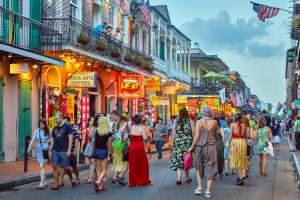
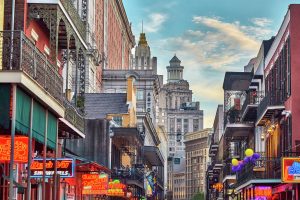
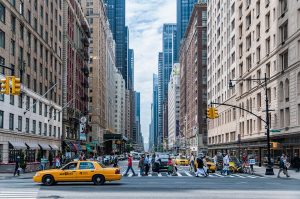
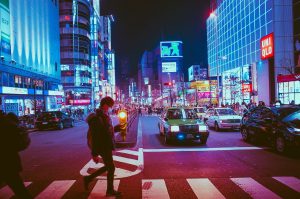
Sony 24-70mm F2.8: (Best Sony focal length for night photography)
I have used this lens for a while, and I will discuss this lens with my personal opinion.
I will focus on three significant points: how it looks and how I feel about it.
The second is autofocus; you guys want to know how fast this thing is.
The third is image quality.
So first thought, look, no need to say, this is just a fantastic piece of metal.
When I touched this for the first time, I was like, ” Wow, buddy, it is excellent and metallic in really thick, and of course, it’s heavy. “
The touching field is fantastic.
It feels like $2,000, like a laboratory. It is very satisfying. Zooming is a little bit heavy, but I love this.
And when it comes to focusing, I could do this all day.
Those zoom rings are so easy to use, pleasant to touch, and a fantastic piece of rubber, and he has a map control switch and a focus lock switch.
So yeah, it’s a bit heavy, but I love this heaviness again since this lens doesn’t have image stabilization.
So I can use this heaviness to take my footage stable, you know what?
Besides, the weight doesn’t matter to me at all.
I tried to vlog with this, but this was killing my right arm.
This lens is not a vlogging lens.
So about the look, I cannot find any negative points about this if you care about this.
So next is the autofocus; what about this?
I think this autofocus speed is just breakneck and very natural.
It chases, moves, and stops; everything is very natural.
However, there was one negative point in manual focus; it was difficult because the focus speed was fast.
So it’s sometimes passed us by the object, which I wanted to focus on, maybe because of F2.8.
So, to focus on everything on your face, you need to close the aperture slightly.
However, I am not good at manual focus and need to practice, but using the manual guide for the first time was fun.
This gave me a new experience, but autofocus is incredible.
So you have nothing to worry about this, even if you’re going to use manual focus most of the time, just in case you have strong backup autofocus.
This autofocus will make your work stable and secure.
It’ll give you a great working environment.
So the last one is image quality; I was surprised by this wide view.
When I Vlog, the balance between face and background is excellent, and when I feel the landscape, it has a wide image and dynamic range.
And even though the opposite is so far away, the image is still sharp in the sharpness and resolution of cinematography.
This is a prime lens; you can shoot with F 2.8 through all focal lengths.
So, when it’s dark, you can still get sure of a smooth, creamy, and wide range of colors.
This can do a lot of things when it comes to photography.
The contrast is high, and the range of color is really wide, especially since this lens catches the light very well.
I agree that Sony officially says this lens is good at catching the light.
Therefore, the conclusion is that the lens maintains high resolution and sharpness throughout all focal lengths and is well-suited for photography and cinematography.
It has a wide range of colors and tight black in vivid color, and the light is smooth and creamy, but also, the image is sharp and crispy.
So, what you guys want to know is this worth buying.
I think purchasing this is a good idea if you have the budget.
Sony 50mm F1.8: (Best Sony E Mount lens for night photography)
This little guy, we’re going to break down and see if it’s good and whether you should buy it.
It’s very compact and weighs in at only 196 grams.
It is one of the lightest and most inexpensive e-mount lenses.
It doesn’t feel like the Sony lenses we’ve come to expect.
It is made from a plastic or composite material but differs from the 85, with almost the same design.
The focus ring turns smoothly and accurately, and it’s made of plastic, unlike most of Sony’s metal ones.
In this case, I prefer it.
This lens has a 49-millimeter filter thread and a minimum focus distance of under 1/5 foot.
Unfortunately, and all too common with Sony, this lens lacks a rubber gasket or seal, which means it’s not a proper weather shield.
You’ll notice that this lens, including the manual focus switch, has no buttons and is not image-stabilized.
As far as value is concerned, it is a good buy for the money.
Now, there may be some third-party or adapted lenses that you can use in this price range.
But it’s always best to use native glass to get all the functionality and performance your camera offers.
So, let’s look at what matters most: performance.
First, let’s look at the autofocus system.
This lens focus system is not internal; as you heard, it’s pretty loud.
Its overall focus speed is anything but impressive, and it does have quite a bit.
It can be pretty jittery when trying to focus, and if audio is important to you, the sound from the motors might be a bit of an issue.
It is a lens designed for photography, and really, that’s where it shines.
The image quality is quite impressive, even wide open at 1.8.
The image is very sharp in the center and reasonably sharp in the corners.
The autofocuses work flawlessly, and for the price of the lens, the bokeh is phenomenal.
Some of the best I’ve seen on our 50 F1.8.
This lens does offer a lot, including some fantastic sharpness and bokeh.
So, wrapping up with a few final thoughts, this lens is perfect for people just starting and looking for that next step above the kit lens.
This versatile lens offers a fast aperture with lots of value in a small package.
If you’re starting, Look for a great portrait lens or budget effector.
I put this one rate between considering and buying.
CONCLUSION:
Alright, guys, that concludes all the lenses we will discuss today in this article.
Do you guys have any experience with these lenses? What are your thoughts on them?
Which is your best Sony Lens for Night Photography?
Is there a lens I didn’t mention in this article that you love using for night photography?
Please leave your thoughts and comments below.
Related Posts:
17 Best sharpest lens for Sony:
I am a Professional and Certified Digital Photographer born in the USA. I have been in this field of photography for 22 years, and in these years, I have used many photography lenses and Cameras, which I want to share here on this website about my experience. The idea for Bestoflens.com is to provide honest information about different Lenses and Camera products in the format of a “Best lenses for AYZ” list. I want this website to be the last destination for people to pick the best Cameras and lenses to fit their needs. You can find our unbiased reviews here on Bestoflens.



